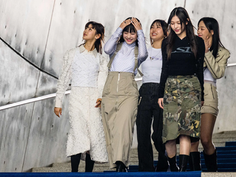Evolution of Marriage and Family Traditions Across Cultures
- Dia Upreti
- Nov 10, 2024
- 4 min read
Diya Upreti, Jadetimes Staff
Diya Upreti is a Jadetimes news reporter covering culture News

With changes in society, economy, as well as cultural values, marriage and family traditions have transcended time. Across cultures, the definition of marriage and family has undergone extensive transformations due to altered contemporary living styles, roles of genders, and various types of families. This proves that such traditions appear to be flexible and long-lasting; their forms may change over time, but they remain a key constituent of human society.
Traditional Marriage Practices and Family Structures
Marriage, traditionally, was a social contract where people often entered marriage for political alliances, inheritance, or prestige of position. Marriages also occurred to fulfill family obligations and sustain the continuation of lineage. For example, arranged marriages were very common in South Asian and Middle Eastern societies, but are still in practice in some cultures. Here families meticulously select the spouse based on myriad factors such as social status, compatibility, and also family ties. In such arrangements, marriage was regarded as a union between not only two but also two families, and the involvement of family elders was as common in arranging and approval of the match.
Traditionally, family structures were extended by several generations, living under one roof. In Asian, African, and some Latin American cultures, the family was regarded as a close unit: grandparents, parents, children, and even cousins all shared responsibilities and resources because they all lived under one roof. This system gave much-needed social and economic security, and it remains prevalent today in some societies, though very adapted to urbanization and economic pressures.
Change in individual Choice and Nuclear Family
Marriage is no longer a duty to perform for one's family. Modernization has caught up with individualism in which marriages are made purely based on individual choice rather than family liabilities. The rise of the 20th century especially in the Western world paved the way for romance to be the center of matrimony. Young people actually look for their perfect match independently on the basis of compatibility, love, and common goals rather than family alliances. The shift was further defined by the emergence of the nuclear family model: a married couple living apart from extended families with their household comprising only parents with their children.
This trend radiated worldwide, especially as urbanization encouraged people to move away from traditional, rural family setups. Smaller family sizes and independent households were common, more so in Western Europe, North America, and later on in Asian, African, and Latin American cities. This has made marriage change from one based on socio-economic considerations to a relationship in which couples prioritize their individual happiness and aspirations in marriage.
Changing Gender Roles and Family Dynamics
Another factor that has had a very strong influence on marriage and family traditions is changing gender roles. Educational and employment opportunities are becoming more accessible to women, which in turn changes the dynamics of marriage and family life. In many countries, expectations set long ago, where men were primarily the breadwinners, and women were their wives in the home, are giving way to much more equal arrangement. Another social development is the presence of dual-income families in modern societies where both partners share financial and domestic responsibilities.
This also shifts the way people view the institution of marriage. Increasing numbers of couples now choose to cohabitate without marriage, especially in the Western world. This trend has reduced the perception that marriage forms the only possible framework for committed relationships. In addition, more of the families that exist today are headed by lone parents or same-sex couples, hence showing that society is becoming more tolerant of alternative family models. The modern idea of "family" has come a long way as it represents diverse forms, but shared love, support, and values compose it rather than being strictly bound by biological or marital tie.
Cross-Cultural and Interfaith Marriages Thrive
Globalization has brought people from various different backgrounds together and has also increased cross-cultural and interfaith marriages. Such unions celebrate diversity and require families to bridge cultural differences, thereby creating new, blended traditions. For example, an interfaith couple may want to draw elements of both their religions into the wedding ceremony or in how the household practices their traditions, blending customs from various backgrounds.
This, therefore means that such marriages promote cultural exchange and highlight the adaptability of marriage traditions. However, they may also be difficult to cope with for couples dealing with differing cultural expectations and resistance from family members. Cross-cultural marriages have thus helped broaden perceptions over what constitutes family and marriage and thus contributed to more inclusive views of these institutions.
The change in marriage and family systems among cultures indicates the fluidity of human relationship and social organization. If at one time, marriage was something of institutionalized practice according to social and economic conditions, today it has become more of a personal choice with emphasis on love and partnership. The changing nature of family forms allows for more commitment, identity, and understanding in kinship relations, and gender roles in the family are evolving, often toward equality and flexibility.
Therefore, marriage and family remain indispensable to societies around the world as means of creating identity, stability, and support. While cultures change and develop, so do these institutions-new forms and meanings arise to reflect modern values and lifestyles. The cross-cultural ability of marriage and family traditions to persist reminds one that, while specifics may differ, love, support, and connection have always been universal.



























Comentários